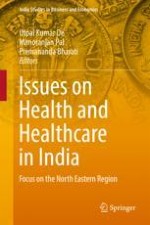2018 | OriginalPaper | Buchkapitel
24. Factors Affecting Morbidity and Utilization of Healthcare Services: A Case Study of Nagaon District of Assam
verfasst von : Nirmala Devi, Rajshree Bedamatta
Erschienen in: Issues on Health and Healthcare in India
Verlag: Springer Singapore
Aktivieren Sie unsere intelligente Suche, um passende Fachinhalte oder Patente zu finden.
Wählen Sie Textabschnitte aus um mit Künstlicher Intelligenz passenden Patente zu finden. powered by
Markieren Sie Textabschnitte, um KI-gestützt weitere passende Inhalte zu finden. powered by
